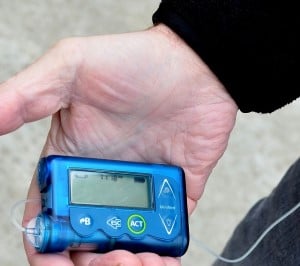Search

The Rio Tinto Children's Diabetes Centre is a research centre that aims to improve the lives of children and young adults living with diabetes by bringing together research, education and clinical care.

Eight-year-old Emily has type 1 diabetes, a lifelong chronic disease that requires constant management and vigilance to keep blood glucose levels on target. It is a relentless disease, not just on individuals but also on families.

News & Events
Cholesterol and blood pressure drugs help teens with diabetesThe study involved screening young people to learn more about the development of long-term kidney, eye and cardiovascular complications in adolescents with T1D.

News & Events
Telethon smashes records as West Australians dig deep for sick kidsHuge congratulations to Telethon on another record-breaking year, with generous West Australians donating just over $38 million to help sick kids.

News & Events
Two The Kids researchers appointed Academy FellowsThe Kids Researchers Professor Susan Prescott and Professor Donna Cross have been appointed Fellows of the prestigious Australian Academy of Health and Med

News & Events
Long-term The Kids Research Institute Australia researchers honoured by prestigious AcademyProfessors Carol Bower & Steve Zubrick have been inducted as new Fellows to the prestigious Australian Academy of Health and Medical Sciences.
Research
Impaired calcium influx underlies skewed T helper cell differentiation in children with IgE-mediated food allergiesReasons for Th2 skewing in IgE-mediated food allergies remains unclear. Clinical observations suggest impaired T cell activation may drive Th2 responses evidenced by increased atopic manifestations in liver transplant patients on tacrolimus (a calcineurin inhibitor). We aimed to assess differentiation potential, T cell activation and calcium influx of naïve CD4+ T cells in children with IgE-mediated food allergies.

News & Events
Stan Perron Charitable Foundation grants boost WA child health researchNew funding from the Stan Perron Charitable Foundation will support innovative research projects and programs at The Kids Research Institute Australia with the aim of improving the health and wellbeing of WA children and their families.

The BioMood project will study how following a Mediterranean diet during pregnancy affects the gut microbiome, metabolism, and inflammation, with the expectation that it will promote a healthier microbiome and better mental health.
Research
Early MovesThe Early Moves study is investigating whether a baby’s early movements can predict difficulties with learning (known as cognitive impairment) later in childhood.
